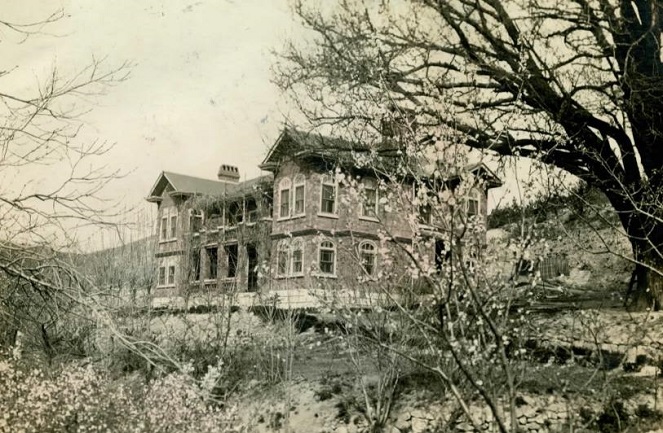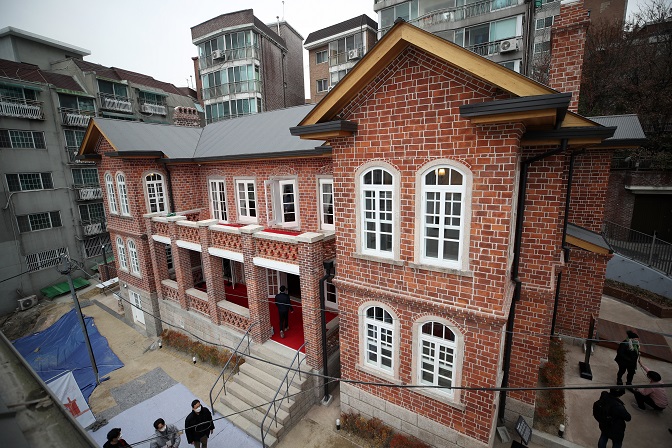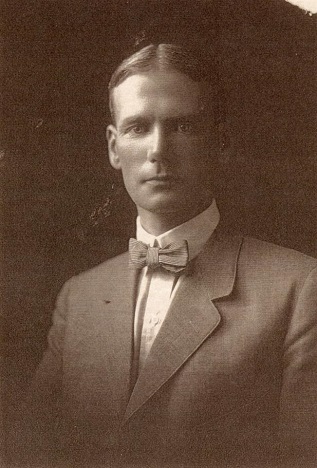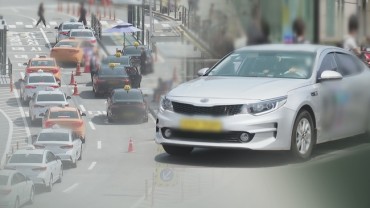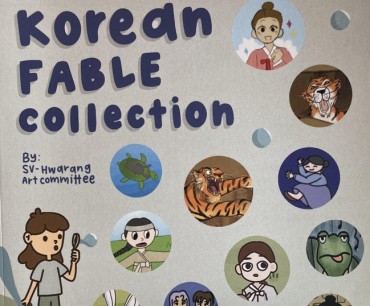SEOUL, March 1 (Korea Bizwire) — All Koreans know that March 1, 1919, marked the start of a nationwide independence movement against Japanese colonial rule.
What most people don’t know is that an American businessman in Seoul — with the unintended help of his wife and newborn son — made sure the world found out about it.
Dilkusha, a two-story red brick house perched at the edge of a mountain that forms the northwestern city wall of Seoul, was home to Albert Wilder Taylor, an engineer who oversaw multiple gold mines across Korea, his British actress wife, Mary Linley Taylor, and their son, Bruce, during the early part of the 20th century.
On Monday, exactly 102 years after the Declaration of Indepedence was proclaimed, Dilkusha opened to the public as a museum, with all of its walls, furniture and mementos restored to their former glory through years of repair and historical study.
The name, which means “Palace of Heart’s Delight” in Sanskrit, was chosen by Mary Taylor, who was inspired by Dilkusha Kothi palace in Lucknow, India.
“In a sense it’s been rebuilt again,” Jennifer Taylor, the granddaughter and daughter of the original inhabitants, said during a recent press tour of the museum, referring to the first time Dilkusha was resurrected in 1930 after a fire destroyed it.
“I think he would have that same feeling of ‘It’s been brought back to life,’ and I think he would be very, very, very surprised,” she added of her late grandfather.
Albert Taylor was the first person to report on the Declaration of Independence in the Western press.
The declaration was written and signed by 33 national leaders and distributed nationwide before being read aloud in front of thousands of citizens in Seoul on March 1, 1919.
The statement set off a wave of anti-Japanese protests across the country through May in what would become a landmark event during Tokyo’s 1910-45 colonial occupation of Korea.
Taylor’s encounter with the declaration was no less dramatic.
The Associated Press asked him to cover the funeral of King Gojong on March 3, 1919, as a special correspondent.
On Feb. 28, his wife Mary gave birth to their son at Severance Hospital, which was then located across from Seoul Station.
When Albert went to see his wife and newborn at the hospital, he came across a bundle of papers stashed under the bed. A quick look revealed to the fluent Korean speaker that the papers were in fact the Declaration of Independence.
Within hours, the businessman wrote an article, enclosed the declaration, and sent it to the United States via Tokyo with the help of his brother, William, who hid the document in his shoes to escape the watch of the Japanese authorities.
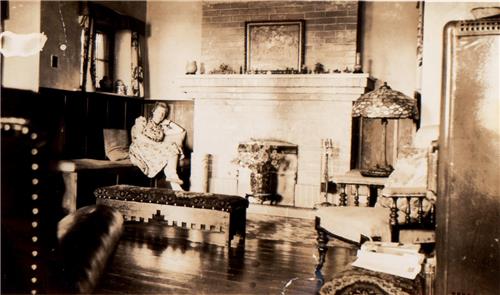
This photo, provided by the Seoul metropolitan government, shows the second floor living room of Dilkusha in the 1920s.
The museum displays a letter Taylor wrote to his mother-in-law on March 7, telling her that her grandson had been born and that he was appointed a correspondent for the Associated Press, which has “kept me very busy.”
Next to the letter is a clipping of an article in the March 13, 1919, edition of The New York Times, datelined “SEOUL, March 12, (Associated Press)” and translating the text of the Declaration of Independence.
“The declaration of Korea’s independence says that it represents the voice of 20,000,000 persons, speaking in the name of justice and humanity,” the article begins.
“We are no mean people,” it continues, quoting the declaration.
“We have forty-three centuries of history as a distinct self-governing nation. It is our solemn duty to secure the right of free and perpetual development of our own national character, adapting ourselves to the principles of the reconstruction of the world.”
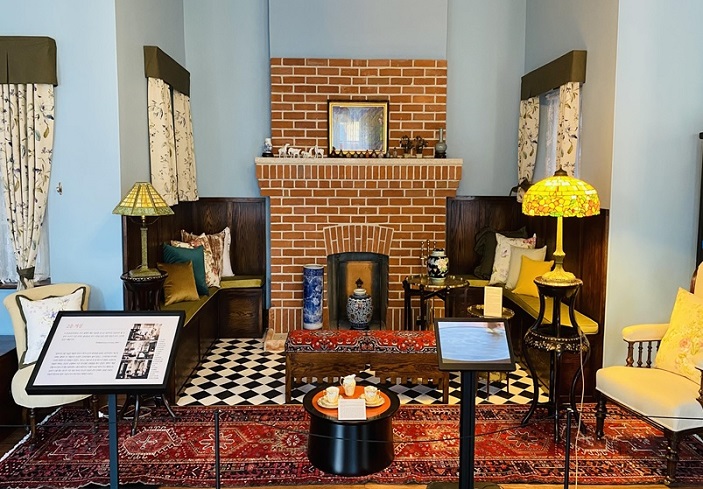
This photo, provided by the Seoul metropolitan government, shows the second floor living room of Dilkusha in its present state.
Taylor’s quest for news didn’t stop there. In April, he covered the aftermath of the Japanese government’s brutal massacre of 29 villagers, including children, in Jeam-ri, Gyeonggi Province.
The following year, he covered the trials of independence fighters from the courtroom.
Dilkusha was completed in 1924 next to a centuries-old gingko tree. The locals protested and a shaman cursed the Taylors for building a house on sacred ground.
To honor God’s help in the process, Albert Taylor engraved “Psalm 127:1″ in the cornerstone of the house and it remains there to this day.
The house measures 623.76 square meters across two floors and a basement. The two floors have an identical layout, with a living room in the middle flanked by smaller rooms to the left and right.
The living rooms were recreated to look the same as they appear in the family’s photos, including by purchasing antique furniture and crafts.
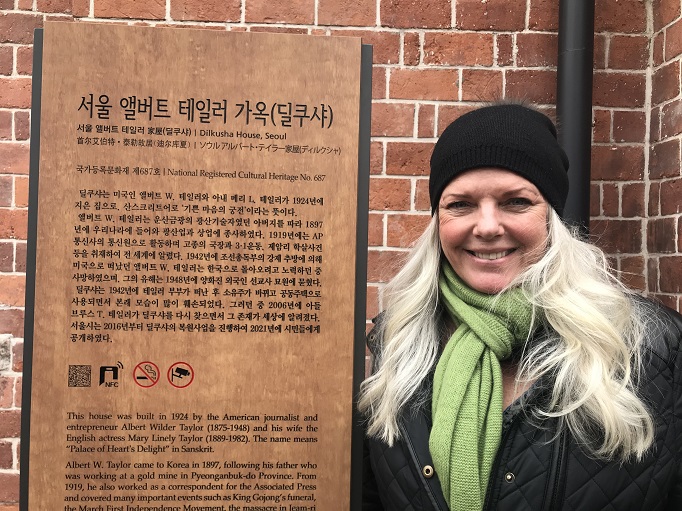
Jennifer Taylor, the granddaughter of Albert and Mary Taylor, poses in front of Dilkusha on Feb. 25, 2021. (Yonhap)
Because the other rooms could not be seen in photos, they were turned into exhibition halls with displays on significant periods of the Taylors’ lives.
One display shows an amber necklace that Albert gave to Mary as an expression of his affection before they parted ways following their first encounter in Yokohama, Japan.
The two reunited 10 months later in India, where they married in June 1917, and moved to Korea to live in their first house, The Little Gray Home, in Seoul’s western Seodaemun Ward.
Two and a half decades later, in 1942, the Taylors were deported under a foreigner deportation directive issued by the Japanese Government-General of Korea.
Before their departure, Albert spent six months at a concentration camp as a citizen of an enemy country of Japan in the Pacific War. Mary was confined to their house.
Despite his wish to return to Korea, Albert died of a heart attack in California in June 1948. Three months later, Mary buried his remains next to his father at Yanghwajin Foreign Missionary Cemetery in Seoul.
After one final visit to Dilkusha, she returned to the United States, where she died in Mendocino, California, in 1982.
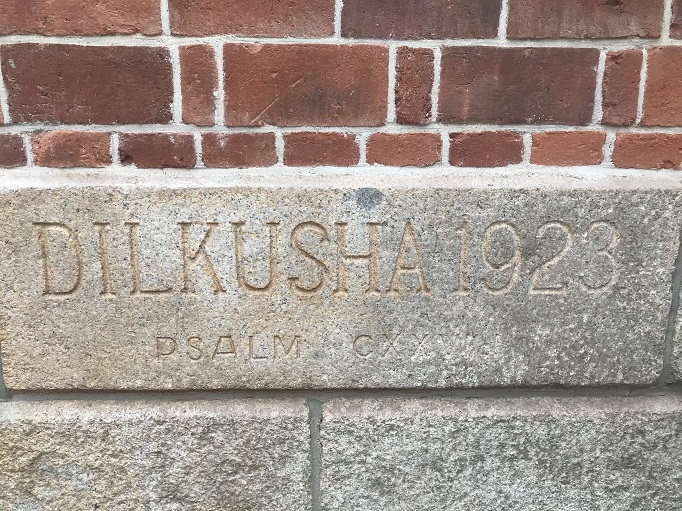
The cornerstone of Dilkusha is engraved with its name, the year construction began, and Psalm 127:1. (Yonhap)
Dilkusha was abandoned for many years before it was found through the efforts of Bruce Taylor, the son, in 2005.
The following year he visited Seoul and confirmed that it was the house he and his parents lived in. It was his first return to the country in 66 years.
After Bruce’s death in 2015, his daughter Jennifer donated many of her family’s belongings to the Seoul Museum of History. In 2017, the government listed Dilkusha as Registered Cultural Heritage No. 687.
“It’s very important that Korean people realize that there were foreigners that stood with them in solidarity, right there, shoulder to shoulder with them, for their independence,” Jennifer Taylor said during the press tour.
“That’s what this means. It means that there were people that were here with them and for them, and that will be in perpetuity. That’s what this will stand for.”
Admission to the museum is free but requires advance reservation at the city government’s website. It is open everyday except Mondays and New Year’s Day.
(Yonhap)


